Well, to understand nodejs I/O events in the event, you must understand nodejs event loop properly.
from the name event loop, we understand it's a loop that runs cycle after cycle round-robin basis until there are no events remains in the loop or the app closed.
The event loop is one of the topmost features in nodejs, it is what makes async programming in nodejs.
When the program starts we are in a node process in the single thread where the event loop runs. Now the most importing things we need to know that the event loop is where all the application code that is inside callback functions is executed.
So, basically all code that is not top-level code will run in the event loop. Some part (mostly heavy duties) might get offloaded to the thread pool
(When is the thread pool used?), the event loop will take care of those heavy duties and return the result to the event of the event loop.
It is the heart of the node architecture, and nodejs built around callback functions. so callbacks will triggered as soon as some work is finished sometime in the future because node uses an event-triggered architecture.
When an application receives an HTTP request on a node server or a timer expiring or a file finishing to read all these will emit events as soon as they are done with their work, and our event loop will then pick up these events and call the callback functions that are associated with each event, it's usually said that the event loop does the orchestration, which simply means that it receives events, calls their callback functions, and offloads the more expensive tasks to the thread pool.
 Now, how does all this actually work behind the scenes? In what order are these callbacks executed?
Now, how does all this actually work behind the scenes? In what order are these callbacks executed?
Well, when we start our node application, the event loop starts running right away. An event loop has multiple phases, and each phase has a callback queue, where the four most important phases are 1. Expired timer callbacks, 2.I/O polling and callbacks 3. setImmediate callbacks, and 4. Close callbacks. There are other phases that is used internally by Node.

So, the first phase takes care of callbacks of expired timers, for example, from the setTimeout() function. So, if there are callback functions from timers that just expired, these are the first ones to be processed by the event loop.
** The most important thing is, If a timer expires later during the time when one of the other phases is being processed, well then the callback of that timer will only be called as soon as the event loop comes back to this first phase. And it works like this in all four phases.**
So callbacks in each queue are processed one by one until there are no ones left in the queue and only then, the event loop will enter the next phase. for example, suppose there is 1000 setTimeOut callbacks timer expired and the event loop is in the first phase then all these 1000 setTimeOuts callbacks will execute one by one then it will go to the next phase(I/O pooling and callbacks).
Next up, we have I/O pooling and execution of I/O callbacks. Here I/O stands for input/output and polling basically means looking for new I/O events that are ready to be processed and putting theme into the callback queue.
In the context of a Node application, I/O means mainly stuff like networking and file access, so in this phase where probably 99% of general application code gets executed.
The next phase is for setImmediate callbacks, and SetImmediate is a special kind of timer that we can use if we want to process callbacks immediately after the I/O polling and execution phase.
And finally, the fourth phase is the close callbacks, in this phase, all close events are processed, for example when a server or a WebSocket shut down.
These are the four phases in the event loop, but besides these four callbacks queues there are actually also two other queues,
1. nextTick() other
2. microtasks queue(which is mainly for resolved promises)

If there are any callbacks in one of these two queues to be processed, they will be executed right after the current phase of the event loop finishes instead of waiting for the entire loop/cycle to finish.
In other words, after each of these four phases, if there are any callbacks in these two special queues, they will be executed right away. Now imagine that a promise resolves and returns some data from an API call while the callback of an expired timer is running, In this case, the promise callback will be executed right after the one from the timer finish.
The same logic also applies to the nextTick() queue. The nextTick() is a function that we can use when we really, really need to execute a certain callback right after the current event loop phase. It's a bit similar to setImmediate, with the difference that setImmediate only runs after the I/O callback phase.
Will all the above things can happen in one tick/cycle of the event loop, In the meantime their new events could have arisen in a particular phase or old event could be expired, the event loop will handle those events with another new cycle.
So now it's time to decide whether the loop should continue to the next tick or if the program should exit. Node simply checks whether there are any timers or I/O tasks that are still running in the background if there aren't any then it will exit the application. But if there are any pending timers or I/O tasks, then the node will continue running the event loop and go starting to the next cycle.

For example, in node application when we are listening for incoming HTTP requests, we basically running an infinite I/O task, and that is run in the event loop, for that Node.js keep running and keep listening for new HTTP request coming in instead of just exiting the application.
Also when we are writing or reading a file in the background that's also an I/O task and it makes sense that the app doesn't exist while it's working with that file, right?
Now The event loop in practices:
const fs = require('fs');
setTimeout(()=>console.log('Timer 1 finished'), 0);
fs.readFile('test-file.txt', ()=>{
console.log('I/O finished');
});
setImmediate(()=>console.log('Immediate 1 finished'))
console.log('Hello from the top level code');
Output:
 Well the first lin is Hello from the top level code, yes it is expected because this is a code that gets executed immediately. Then after we have three output, Timer 1 finished this line is expected because of phase one as we discuess before, but after that I/O finished should be printed, because we discuess that setImmediate runs after the I/O callback phase, but this code is actually not in an I/O cycle, so it is not running inside of the event loop, because it's not runnin inside of any callback function.
Well the first lin is Hello from the top level code, yes it is expected because this is a code that gets executed immediately. Then after we have three output, Timer 1 finished this line is expected because of phase one as we discuess before, but after that I/O finished should be printed, because we discuess that setImmediate runs after the I/O callback phase, but this code is actually not in an I/O cycle, so it is not running inside of the event loop, because it's not runnin inside of any callback function.
Now lets do another test:
const fs = require('fs');
setTimeout(()=>console.log('Timer 1 finished'), 0);
setImmediate(()=>console.log('Immediate 1 finished'));
fs.readFile('test-file.txt', ()=>{
console.log('I/O finished');
setTimeout(()=>console.log('Timer 2 finished'), 0);
setImmediate(()=>console.log('Immediate 2 finished'));
setTimeout(()=>console.log('Timer 3 finished'), 0);
setImmediate(()=>console.log('Immediate 3 finished'));
});
console.log('Hello from the top level code')
Output:

The output is as expected right? Now let's add some delay:
setTimeout(()=>console.log('Timer 1 finished'), 0);
setImmediate(()=>console.log('Immediate 1 finished'));
fs.readFile('test-file.txt', ()=>{
console.log('I/O finished');
setTimeout(()=>console.log('Timer 2 finished'), 3000);
setImmediate(()=>console.log('Immediate 2 finished'));
setTimeout(()=>console.log('Timer 3 finished'), 0);
setImmediate(()=>console.log('Immediate 3 finished'));
});
console.log('Hello from the top level code')
output: 
In the first cycle inside I/O everything executed, but because of the dealy Timer-2 executed inside its code in the second cycle.
Now Lets add nextTick(), and see how nodejs behaves:
setTimeout(()=>console.log('Timer 1 finished'), 0);
setImmediate(()=>console.log('Immediate 1 finished'));
fs.readFile('test-file.txt', ()=>{
console.log('I/O finished');
setTimeout(()=>console.log('Timer 2 finished'), 3000);
setImmediate(()=>console.log('Immediate 2 finished'));
setTimeout(()=>console.log('Timer 3 finished'), 0);
setImmediate(()=>console.log('Immediate 3 finished'));
process.nextTick(()=>console.log('Process Next Tick'));
});
console.log('Hello from the top level code')
Output:

Well, the first callback is executed is inside the process.NextTick(), as it is expected right? Because nextTicks callbacks stays in the microtask queue an they executed after each phase.







